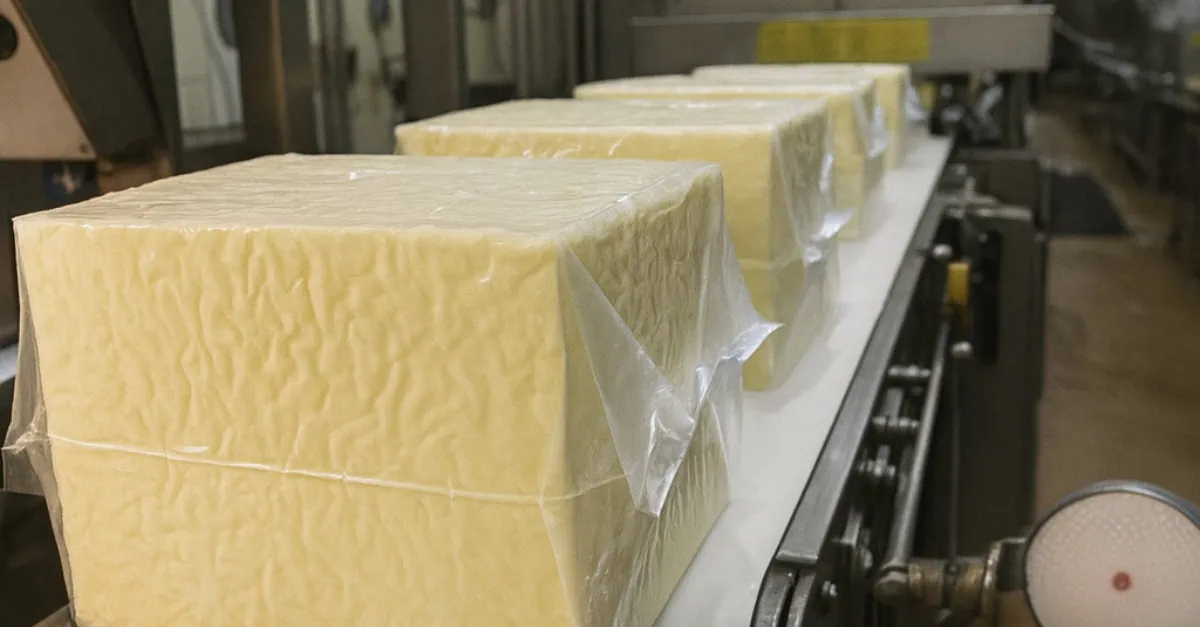European butter markets gained some ground late last week and early this week, as manufacturers reduced immediate stock pressure in prior weeks. The EU Vesper Price Index for butter currently stands at €4900/mt ($5688/mt or $2.58/lb) EXW as of October 22, 2025.
However, substantial butter stocks remain, with more production pending in the remaining months of 2025. Irish and French butter currently represents the cheapest options, with trades already taking place well below €5000/mt due to strong milk and butter availability.
Cream prices are hovering around €6000/mt, while spot milk prices as low as €300/mt will enable butter production at lower price points. Buyers have shifted their focus away from Q4 volumes toward Q1 and Q2 2026 purchases if pricing aligns with their targets.
US butter markets continue to find lows not seen since February 2021, with current prices at half the peak levels reached during 2024. The US VPI butter price now stands at €3038/mt ($3527/mt or $1.6/lb) EXW. Seasonally higher butter consumption in the US provides some domestic demand support, but exports face challenges as Europe re-enters the global export market at competitive prices.
New Zealand butter prices declined slightly during this week’s GDT event, while rising AMF prices restored some of the price spread between the two products. Oceania butter price is currently at €5814/mt ($6750/mt or $3.06/lb) EXW. Relatively high butter imports from China so far this year (+8.4% year-to-date compared to the prior year) maintain support for butterfat markets in the Asia-Pacific region, resulting in a premium for New Zealand compared to the EU and US.
SMP markets struggle to maintain current price levels
Global SMP markets face difficulty holding current price levels as demand remains lower than supply, particularly as milk production increases across all regions. The EU Vesper Price Index for SMP increased to €2060/mt ($2391/mt or $1.08/lb) EXW as of October 22, 2025.
Chinese SMP imports decreased 12.51% year-over-year in September, confirming weak demand. In the European market, some powder has already traded at €2000/mt, though this was for slightly older SMP in limited volumes. With SMC trading around €1200/mt and lower, processors can produce SMP at lower cost points.
This week’s GDT event concluded with prices of €2124/mt for European SMP in Contract 2, representing a small uptick in a market that remains weak overall. New Zealand milk solids production in September increased 3.41% year-over-year, indicating substantial SMP production volumes ahead this season. Oceania SMP price currently stands at €2196/mt ($2550/mt or $1.16/lb) EXW.
The US market similarly faces more supply than demand, with the US VPI SMP price now at €2108/mt ($2447/mt or $1.11/lb) EXW.
WMP prices decline across all regions
WMP prices are declining across all regions due to large raw milk availability. This week’s GDT event reflected lower pricing, with the European market still trading at a $400/mt premium compared to New Zealand. The EU Vesper Price Index for WMP decreased to €3500/mt ($4062/mt or $1.84/lb) EXW as of October 22, 2025, while Oceania WMP price stands at €3144/mt ($3650/mt or $1.66/lb) EXW.
Current fair value for WMP in Europe remains significantly lower than spot levels. Higher milk solid production volumes in New Zealand will translate into increased WMP production later in the 2025/26 milk season.
Chinese WMP production remains far below all-time highs, while exports reached their highest values on record, confirming China’s changing role in global WMP markets.
Market outlook
The analysis indicates that selling spot milk well below current farm gate milk prices represents the lesser of two evils for processors rather than a choice made from a position of strength. Substantial milk volumes expected over the next few months point toward further price declines.
Lower prices typically attract more buyers, but elevated consumer prices continue to indicate weakness in consumption. Export demand is expected to recover before domestic consumption improves later next year. Production may decline by that time.
The price outlook for all regions remains weak, especially in the short term for Q4, where substantial milk flows are expected and production feels inevitable across butter, SMP, and WMP categories.
This article is part of a more comprehensive butter market analysis. For the full analysis, visit: https://app.vespertool.com/market-analysis/2381





